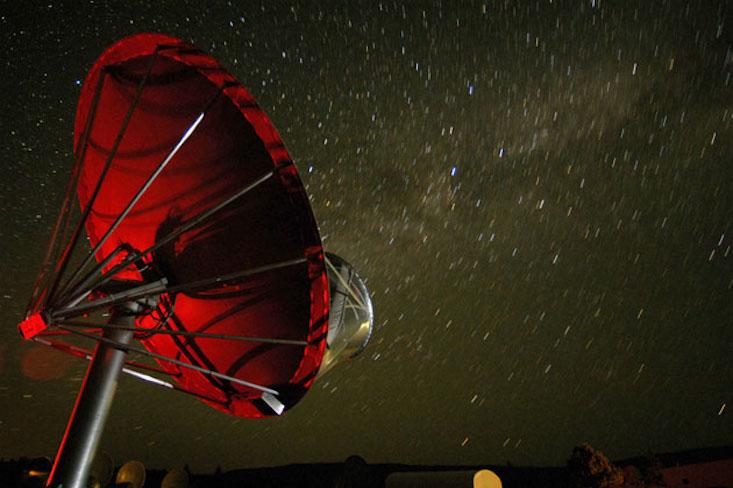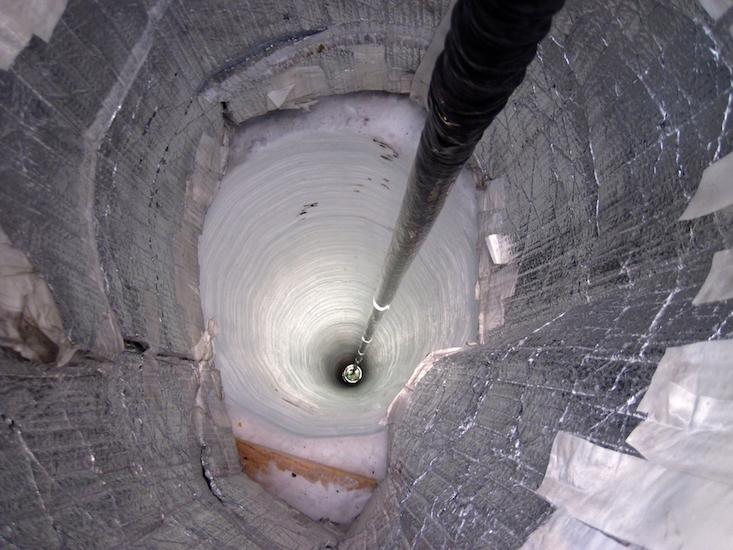Why will we have evidence of alien existence - if they exist - by 2035

I argued for a cup of coffee to everyone that by 2035 we will have evidence. ET For many of my colleagues, this sounds like a losing proposition. For more than half a century, a small group of scientists has been searching for extraterrestrial intelligence (Search for Extraterrestrial Intelligence) or SETI. And we found nothing.
I am an optimist - as a scientist, I have to be. But my hopes are not wishful thinking; they are based on strong SETI logic. Half a century sounds like a long time, but the search really just started. Given the current state of the efforts and abilities of SETI, I feel that we are on the verge of something truly revolutionary.
Most of our experiments so far have used large radio antennas to eavesdrop on radio signals transmitted by other civilizations, an approach that was shown by Jodie Foster in the 1997 film Contact. Unlike other films about aliens, Vkontakte showed very well how we could search for aliens. However, this film reinforced the general conviction that SETI scientists are searching for unusual cosmic patterns, such as a sequence of prime numbers. The truth is simpler: we were looking for narrowband signals. "Narrowband" means that much of the transmitter power is compressed into a tiny part of the radio band, which makes it easier to find transmission. This is similar to how a laser pointer, despite having only a few milliwatts of power, still looks bright because the energy is concentrated in a narrow range of wavelengths.
')

A modern SETI receiver simultaneously examines dozens and even hundreds of millions of channels, each of which has a limited bandwidth of 1 Hz. This bandwidth is 5 million times narrower than a television signal, and cannot transfer information - a message. But the idea is to first detect the aliens that are on the air, after which a much larger tool will be created to find any modulation.
To orient our antennas, SETI traditionally used two approaches. One of them is scanning as much of the sky as possible; the other is a focus on neighboring star systems. You might think that the first will have an advantage, because there are no assumptions about where the aliens might be. But in exploring the sky, you spend most of your time looking at empty space. If you agree with the generally accepted opinion that aliens most likely live on planets or moons, then it is better to spend precious time of the telescope on studying nearby star systems.
It is difficult to imagine that aliens will go to push two black holes.
One of the current target searches is the study of red dwarfs, which takes place in the Allen Telescope Array, an ensemble of 42 antennas located in the California Cascades. We compile a list of 20,000 small stars that are prime candidates for habitable planets. These ruddy stars are numerous and, on average, old. Most of them were billions of years old when life on Earth evolved from microscopic mucus to high-tech hominids. Astronomers believe that about half of all red dwarfs can have planets in the habitable zone, where water will remain in liquid form.
The SETI Institute is not the only group of alien hunters. Thanks to a large infusion of money from Russian billionaire Yuri Milner, the SETI group at the University of California at Burkley leases time on the Green Bank telescope in West Virginia and the Parkes radio telescope west of Sydney, Australia. Their ten-year project, known as Breakthrough Listen, also focuses on individual stellar systems.
Although these efforts are generally similar to what has been done for decades, they are not the same as SETI. The rapid growth of digital processing means that several wider radio bands can be considered, and, in the case of the Allen array, many stellar systems can be tested simultaneously. Three stars are now being studied in the array, but the additional power of a computer can increase them to more than 100. For two decades, SETI experiments will be able to complete reconnaissance in 1 million star systems, which is hundreds of times more than it has been until now. Scientists from SETI from Frank Drake to Carl Sagan estimate that there are currently 10,000 to several million broadcasting civilizations in the galaxy. If these estimates are correct, then the study of 1 million star systems can lead to discovery. So, if the SETI assumption is correct, we must find the translation from ET for one generation. This would save me from buying you a cup of coffee.
In addition, scientists are divided. For two decades, some SETI researchers have used conventional optical telescopes to search for extremely short laser flares emanating from stars. In many ways, aliens are more likely to communicate with pulsed light than radio signals, for the same reason that people turn to fiber optics to access the Internet: it can, at least in principle, send 100,000 times more bits per second than the radio. These so-called optical SETI experiments were limited to viewing one star system at a time. But, like their relatives - radio amateurs, they will work much faster, since the new technology allows them to explore ever wider parts of the sky.

The IceCube neutrino observatory in Antarctica searched for cosmic neutrinos, which some astronomers suggested as a medium for extraterrestrial communications.
Physicists have also proposed completely new ways of communication, such as neutrinos and gravitational waves. Some of my SETI colleagues have thought through these options, but at the moment we don’t see much in them. Both neutrinos and gravitational waves are inherently difficult to create and detect. In nature, a star collapse or a fusion of black holes is needed to produce them in the right quantity. The total energy required to send “Hello Earth” would be great even for a civilization that controls the resources of the galaxy.
IceCube, a large neutrino detector from the University of Wisconsin in Antarctica, is sensitive only to very high-energy particles that are the most expensive to produce. Over all the years of work, he discovered a total of several dozen of these particles, although it has a size of one cubic kilometer. As for gravitational waves, the Laser Interferometric Gravitational-Wave Observatory was able to detect colliding black holes in the last seconds of their collapse. It is hard to imagine that the aliens would deal with the problem of the collision of two huge black holes to get a second signal.
But there is a completely different approach that has yet to be studied in great detail: the search for artifacts - engineering projects of an advanced civilization. Some astronomers have offered someone else's megastructure, perhaps the Dyson sphere, collecting energy, as an explanation for the mysterious darkening of the star Tabby (officially known as KIC 8462852). This is a serious opportunity, but so far no evidence has been found to support it.
We can never prove that there are no aliens, only that they are.
It can also be assumed that aliens could have left time capsules in our own solar system, perhaps millions or billions of years ago, on the assumption that our planet could eventually develop a species capable of finding them. The Lagrange points of the Earth and the Moon, where the gravity of the Earth, the Moon and the Sun is balanced, so that the object in them remains unchanged in them - they were proposed as good hunting grounds for alien artifacts, like the Moon itself.
Another idea is that we should look for high-energy interstellar exhaust emissions. The fastest spacecraft, apparently, will use the most efficient fuel: a substance annihilating with antimatter. Their "burning" will not only carry the ship through space at great speed, but also lead to the emission of gamma radiation, which we can detect. Rockets can be distinguished from natural sources of gamma radiation by their relatively fast movement across the sky.
Artifacts are attractive in that they are easier to find. For example, to search for signals, you need to activate your tools at the right time. You cannot search for radio ping, laser flashes or bursts of neutrinos if ET sent them during dinosaur times or a hundred million years later. Artifacts do not have this synchronization problem. However, the search for artifacts has its own drawbacks. Everything outside our solar system must really be huge to be visible; the cousins of the Enterprise ship would be very difficult to find.
SETI is not a traditional science in which a hypothesis can be falsified. We can never prove that there are no aliens, only that they are. But our ability to search improves with every technological breakthrough. I compare the situation with the year 1491. European civilization was about 2500 years old, but America was not on the same map. The Mesoamerican civilization, on the other hand, lived for about the same long, and also did not know what lay above the oceans. With the cry of the sailor on Pint, everything changed.
Seth Shostak is a senior astronomer at the SETI Institute. He headed the Research Group of the International Academy of Astronautics for a decade and hosts the weekly scientific radio show at the SETI Institute, Big Picture Science. He is the co-author of a textbook on astrobiology and the book Confessions of an Alien Hunter: A Search for Extraterrestrial Mind by Scientists.


Source: https://habr.com/ru/post/370903/
All Articles